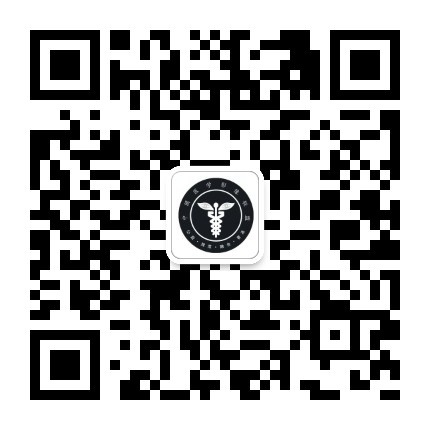摘要:人工智能在医学影像领域的研究和应用受到了广泛的关注,辅助诊断肿瘤的良恶性、解决疾病风险分层及预测肿瘤患者预后等是人工智能研究的热点,但其临床应用仍面临诸多挑战。拟从医学影像人工智能应用现状与面临挑战、医学人工智能提升影像组学研究与其生物学验证2个方面进行概述,并简要介绍本期“智能影像学”专栏的4篇相关论文,以期引起学者们的重视,促进人工智能在医学影像中的研究与应用。
参考文献:
| [1] | TOPOL E J. High-performance medicine: the convergence of human and artificial intelligence[J]. Nat Med, 2019, 25(1): 44-56. DOI:10.1038/s41591-018-0300-7 |
| [2] | AERTS H J, VELAZQUEZ E R, LEIJENAAR R T, et al. Decoding tumour phenotype by noninvasive imaging using a quantitative radiomics approach[J]. Nat Commun, 2014, 5: 4006. DOI:10.1038/ncomms5006 |
| [3] | IBRAHIM A, PRIMAKOV S, BEUQUE M, et al. Radiomics for precision medicine: current challenges, future prospects, and the proposal of a new framework[J]. Methods, 2021, 188: 20-29. DOI:10.1016/j.ymeth.2020.05.022 |
| [4] | BI W L, HOSNY A, SCHABATH M B, et al. Artificial intelligence in cancer imaging: clinical challenges and applications[J]. Ca Cancer J Clin, 2019, 69(2): 127-157. |
| [5] | LITJENS G, KOOI T, BEJNORDI B E, et al. A survey on deep learning in medical image analysis[J]. Med Image Anal, 2017, 42: 60-88. DOI:10.1016/j.media.2017.07.005 |
| [6] | WANG S, YANG D M, RONG R, et al. Pathology image analysis using segmentation deep learning algorithms[J]. Am J Pathol, 2019, 189(9): 1686-1698. DOI:10.1016/j.ajpath.2019.05.007 |
| [7] | 倪炯, 王培军. 医学影像人工智能的现状与未来[J]. 中华医学杂志, 2021, 101(7): 455-457. DOI:10.3760/cma.j.cn112137-20201213-03351 |
| [8] | CUI S, TSENG H H, PAKELA J, et al. Introduction to machine and deep learning for medical physicists[J]. Med Phys, 2020, 47(5): 127-147. |
| [9] | SHAN H, PADOLE A, HOMAYOUNIEH F, et al. Competitive performance of a modularized deep neural network compared to commercial algorithms for low-dose CT image reconstruction[J]. Nat Mach Intell, 2019, 1(6): 269-276. DOI:10.1038/s42256-019-0057-9 |
| [10] | MA H, GUO H, ZHAO M, et al. Automatic pulmonary groundglass opacity nodules detection and classification based on 3D neural network[J]. Med Phys, 2022, 49(4): 2555-2569. DOI:10.1002/mp.15501 |
| [11] | LARSEN M, AGLEN C F, LEE C I, et al. Artificial intelligence evaluation of 122 969 mammography examinations from a population-based screening program[J]. Radiology, 2022, 303(3): 502-511. DOI:10.1148/radiol.212381 |
| [12] | TANDEL G S, TIWARI A, KAKDE O G. Performance optimisation of deep learning models using majority voting algorithm for brain tumour classification[J]. Comput Biol Med, 2021, 135: 104564. DOI:10.1016/j.compbiomed.2021.104564 |
| [13] | MATHENY M E, WHICHER D, THADANEY ISRANI S. Artificial intelligence in health care: a report from the national academy of medicine[J]. JAMA, 2020, 323(6): 509-510. |
| [14] | LAMBIN P, RIOS-VELAZQUEZ E, LEIJENAAR R, et al. Radiomics: extracting more information from medical images using advanced feature analysis[J]. Eur J Cancer, 2012, 43(4): 441-446. |
| [15] | TOMASZEWSKI M R, GILLIES R J. The biological meaning of radiomic features[J]. Radiology, 2021, 298(3): 505-516. |
| [16] | GILLIES R J, KINAHAN P E, HRICAK H. Radiomics: images are more than pictures, they are data[J]. Radiology, 2016, 278(2): 563-577. |
| [17] | PARK S H, HAN K. Methodologic guide for evaluating clinical performance and effect of artificial intelligence technology for medical diagnosis and prediction[J]. Radiology, 2018, 286(3): 800-809. |
| [18] | GROSSMANN P, STRINGFIELD O, EL-HACHEM N, et al. Defining the biological basis of radiomic phenotypes in lung cancer[J]. Elife, 2017, 6: 23421. |
| [19] | GANESHAN B, GOH V, MANDEVILLE H C, et al. Non-small cell lung cancer: histopathologic correlates for texture parameters at CT[J]. Radiology, 2013, 266(1): 326-336. |
 中国医学影像联盟
中国医学影像联盟 购物车
购物车 学习记录
学习记录 使用帮助
使用帮助 联系我们
联系我们



